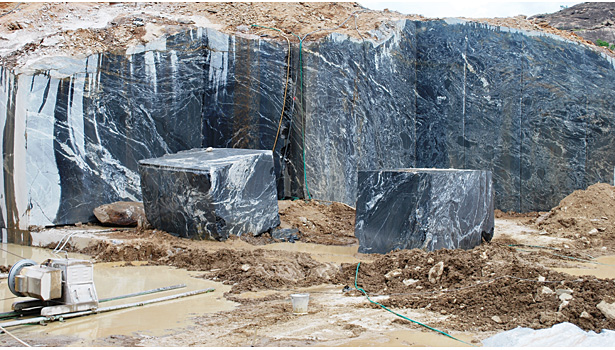Revealing the Mysteries of Granite Quarrying: Where Toughness and Beauty Meet
The globe of granite quarrying is a world where the raw toughness of nature assembles with human virtuosity to create structures that stand the test of time with an air of sophistication. From the midsts of quarries to the meticulous polishing in workshops, the process of changing granite right into building wonders is a complex dance of custom and advancement. As we peer right into the midsts of this old craft, we begin to uncover the covert ins and outs that form the really significance of our constructed setting.
The Beginnings of Granite Quarrying
In the record of building history, the beginnings of granite quarrying are shrouded in a tapestry of old craftsmanship and geological wonders. Dating back to ancient Egypt and Mesopotamia, the extraction of granite from quarries marked the beginning of a trip that would at some point bring about the creation of some of the world's most iconic structures.
Granite quarrying's roots can be mapped to the experienced artisans who acknowledged the rock's longevity and visual allure. Via a mix of primitive tools and sheer determination, these early quarry workers uncovered granite blocks that would certainly become the structure blocks of civilizations.
As human beings evolved, so did the techniques of quarrying granite. The Romans, renowned for their design expertise, established sophisticated methods for removing granite to construct monoliths, holy places, and roads that stood the test of time.
The legacy of these old quarrying methods remains to shape modern-day design, with granite staying a symbol of toughness and sophistication in building projects around the world. (granite quarries in south africa)
Devices of the Quarrying Trade
The advancement of granite quarrying strategies from ancient civilizations to modern-day times highlights the important function played by the tools of the quarrying trade in forming the market's practices. In old times, quarrying tools were basic, often including blades, hammers, and wedges made from products like bronze or iron. These tools called for considerable workforce and time to remove granite blocks from quarries.

Additionally, the introduction of pneumatically-driven devices and high-powered equipment has actually dramatically reduced the physical labor called for in quarrying procedures, boosting employee security and efficiency. As the quarrying market continues to innovate, the tools of the profession continue to be at the center of driving progression and forming the future of granite extraction.
Extracting Blocks of Granite
Making use of accuracy equipment and advanced techniques, the extraction of granite obstructs from quarries has actually ended up being an advanced process look at more info in the view it now modern-day quarrying sector. The preliminary step involves determining the place and size of the granite down payment to establish one of the most efficient removal approach. When a suitable website is chosen, the extraction procedure starts with the boring of openings for the positioning of dynamites. Regulated blasting techniques are after that employed to damage apart the granite right into manageable areas.

Polishing and Finishing Strategies
To accomplish a flawless surface area on granite blocks, proficient artisans use a series of meticulous sprucing up and completing strategies. After the preliminary removal and shaping procedures, the granite blocks undertake a complete polishing stage to enhance their all-natural charm and durability. One usual method made use of in polishing granite is ruby abrasion, where industrial diamonds are made use of to grind and polish the stone to a smooth surface. This process not only creates a lustrous surface area yet likewise guarantees harmony in color and structure throughout the granite block.
In enhancement to polishing, finishing methods are related to more refine the granite's appearance. These strategies might include flaming, developing, or brushing, each offering special appearances and finishes to suit different visual choices. Flaming, as an example, involves exposing the granite surface area to high temperatures to produce a harsh, distinctive coating, perfect for exterior applications where slip-resistance is important. Developing, on the other hand, supplies a matte surface that is smooth to the touch, best for interior kitchen counters and floor covering. By carefully picking and using these brightening and ending up strategies, craftsmens can check this site out change raw granite obstructs right into elegant items that display both stamina and sophistication.

Ecological Effect and Sustainability
With the expanding focus on ecological consciousness in the sector, granite quarrying techniques are increasingly inspected for their effect on all-natural sources and long-term sustainability. Additionally, the transportation of granite from quarries to processing centers creates carbon exhausts, further contributing to environmental destruction.
To mitigate these impacts and guarantee sustainability in granite quarrying, market stakeholders are embracing different procedures. Applying innovative technologies to reduce energy consumption and water usage, reclaiming quarried land for ecological restoration, and promoting responsible sourcing practices are some approaches being employed. Qualifications such as the Woodland Stewardship Council (FSC) and the Leadership in Energy and Environmental Design (LEED) aid customers determine ecologically friendly granite items.
Conclusion
Finally, granite quarrying is a procedure that requires specialized devices and methods to remove blocks of granite and brighten them to a high level of surface. While the environmental influence of quarrying can be considerable, initiatives are being made to enhance sustainability techniques in the sector. Generally, granite quarrying is a delicate equilibrium between taking advantage of the strength and style of this natural rock while reducing its effect on the atmosphere.